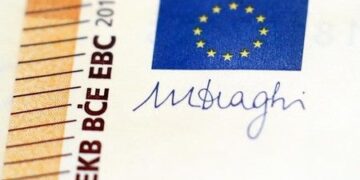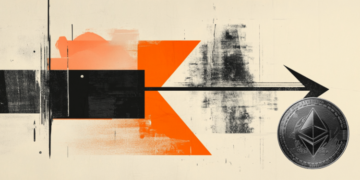Your Go-To
Trading Dictionary: The 2025 Edition
Whether
you interpret price charts or read through market commentary, fluency in key
terms is essential for new traders as it enables them to build a robust
foundation of knowledge for sustained success in trading. Octa broker presents
this 2025-ready glossary that unites classic concepts and trending terms for
today’s markets.
Foundational Concepts
Ask / Bid PriceThe ask
price is the lowest price a seller will accept; the bid price is the highest
price a buyer is willing to pay. If you buy a financial instrument (for
example, a forex pair), you buy it at an ask price (and pay it to the seller).
If you then decide to sell it, you sell it at a bid price, which is paid by the
buyer.
Spread
A spread is
the difference between the ask and bid price.A deep and liquid market (for example, EURUSD) would usually have
a narrow, or ‘tight’, spread. Conversely, markets with fewer sellers and buyers
would normally have a relatively wide, or
‘loose,’ spread.
Pip
A pip
measures a small movement in exchange rates, usually 0.0001. Example: a move
from 1.2040 to 1.2045 is five pips.
Leverage
Leverage
lets traders control big positions with less capital. Depending on the broker’s
rules, leverage can multiply gains as well as losses.
Example: With 1:100 leverage, an account with £1,000 would be able to control a
position worth £100,000.
Long / Short Position
Going long means buying an asset, anticipating
that its price will rise. Going short
means selling an asset, anticipating that its price will fall.
Lot Size
Forex trades
use standardised units called lots.
One standard lot equals 100,000 units of currency. There are also mini lots and micro lots.
Stop-Loss / Take-Profit
These
normally refer to pending orders on open positions to automatically close them
at pre-set levels. This is vital for risk control.
CFD (Contract for Difference)
A CFD is a
financial instrument that lets traders speculate on the price moves of an asset
without actually owning it.
Bullish / Bearish
Refer to
investors’ and/or traders’ expectations. ‘Bullish’ describes positive market
outlook and expectations for higher prices, while ‘bearish’ indicates a
negative perception and anticipation for lower prices.
Technical Terms
Support / Resistance
A support
level is where a lot of buyers are expected to enter the market, thus
supporting the price and preventing it from falling further. Likewise, a
resistance level is where sellers are anticipated, preventing the price from
rising higher.
Trend / Trendline
A trend
shows overall price direction. The trend is bullish
if an asset’s price is rising, with each consecutive peak and trough higher
than the previous one. A trend is bearish
if the price is falling and each successive peak and trough is lower than the
previous one. A trend can also be sideways
or range-bound when the price is
moving within a specific trading range. Traders would normally draw trendlines to identify a trend.
Moving Average (MA)
A moving
average calculates the average price of an asset over a specific timeframe, usually measured in candles.
Example: A 50-day MA calculates the average price over the last 50 trading
sessions.
Candles (Candlesticks)
Visual
representations of price movements over a specific timeframe. Each candle shows
the opening, closing, high, and low prices within that period, helping traders
interpret market sentiment at a glance.
Timeframe
Refers
to the length of time each candlestick or bar represents on a chart. It defines
how much market data is condensed into a single price unit.
Example:
On a 1-hour timeframe, each candlestick
shows the price movement during one hour of trading.
Volatility
Measures the
extent and the speed of price moves. More volatility usually means higher risk
and greater potential reward.
Breakout
A breakout
happens when price smashes through support or resistance, often precipitating a
new trend in the direction of a breakout.
Volume
The number
of contracts, shares, or lots traded during a specific timeframe. Surging volume usually confirms strong moves.
Market-Related Vocabulary
Liquidity
How easily
something can be bought or sold. High liquidity equals faster execution and
tighter spreads.
Slippage
When a trade
fills at a worse price than expected or planned. This is common during
high-impact events, when the price moves very fast and ‘slips through’ the
desired price.
Correction / Reversal / Retracement /
Pullback
All describe
a pause or change in trend. Often used interchangeably, though with subtle
differences.
Consolidation
A phase of
sideways movement—markets catch their breath before choosing direction.
Example: Gold consolidated in August-November 2022, before turning bullish in
Q1 2023.
Trading Slang / Jargon
FOMO
Stands for ‘fear of missing out’—a common feeling
of anxiety stemming from the fear of missing out on pleasant or rewarding
experiences. In trading, FOMO frequently refers to a trader’s apprehension
about not participating in a significant upward or downward price movement,
thereby missing potential gains.
HODL
Born from a
typo, now gospel in crypto circles. Means “hold on through the chaos.”
Pump and Dump
An asset’s
price is deliberately pushed up, only to be quickly sold off for profit—often
seen in new, thinly traded cryptocurrencies.
Whipsaw
Rapid price
reversals that hurt both buyers and sellers, making it difficult to spot a
sustainable trend
Bagholder
Stuck
holding a crashing asset, hoping for a comeback.
Rekt
Trader-speak
for taking a major loss.
Dead Cat Bounce
A brief
recovery during a strong downtrend—often misleading.
Trending Terms in 2025
DePIN (Decentralised Physical
Infrastructure Network)
A
blockchain-based system that manages real-world infrastructure—such as wireless
networks, sensors, or energy grids—by allowing users to contribute hardware and
earn rewards for supporting the network.
AI Agent Trading
AI bots that
trade autonomously based on market signals, news, and historical data.
Gas Fees
Fees paid to
process blockchain transactions—can spike during congestion, especially on
Ethereum.
Learning
these terms is just the beginning of facilitating market understanding. The
more fluent traders are in the language of the markets, the quicker they adapt.
For those just starting out, it’s advised to study educational resources and
webinars from market experts—similar to those offered by global brokers like
Octa. In markets that never sleep, knowledge really is power.
Disclaimer: Trading involves risks and may not be
suitable for all investors. Use your expertise wisely and evaluate all
associated risks before making an investment decision.
About Octa
Octa is an
international broker that has been providing online trading services worldwide
since 2011. It offers commission-free access to financial markets and various
services used by clients from 180 countries who have opened more than 52
million trading accounts. To help its clients reach their investment goals,
Octa offers free educational webinars, articles, and analytical tools.
The company is involved in a
comprehensive network of charitable and humanitarian initiatives, including the
improvement of educational infrastructure and short-notice relief projects
supporting local communities.
Since its foundation, Octa has won
more than 100 awards, including the ‘Most Reliable Broker Global 2024’ award
from Global Forex Awards and the ‘Best Mobile Trading Platform 2024’ award from
Global Brand Magazine.
















